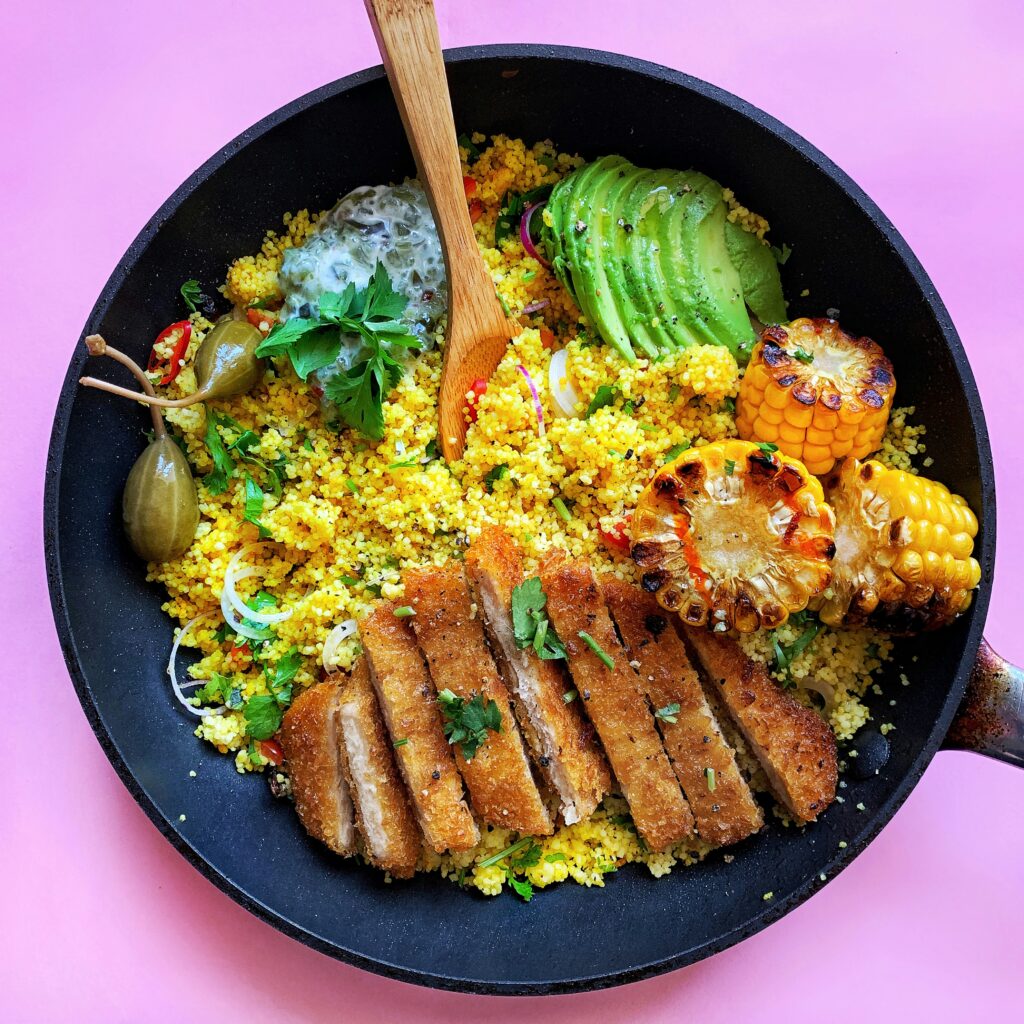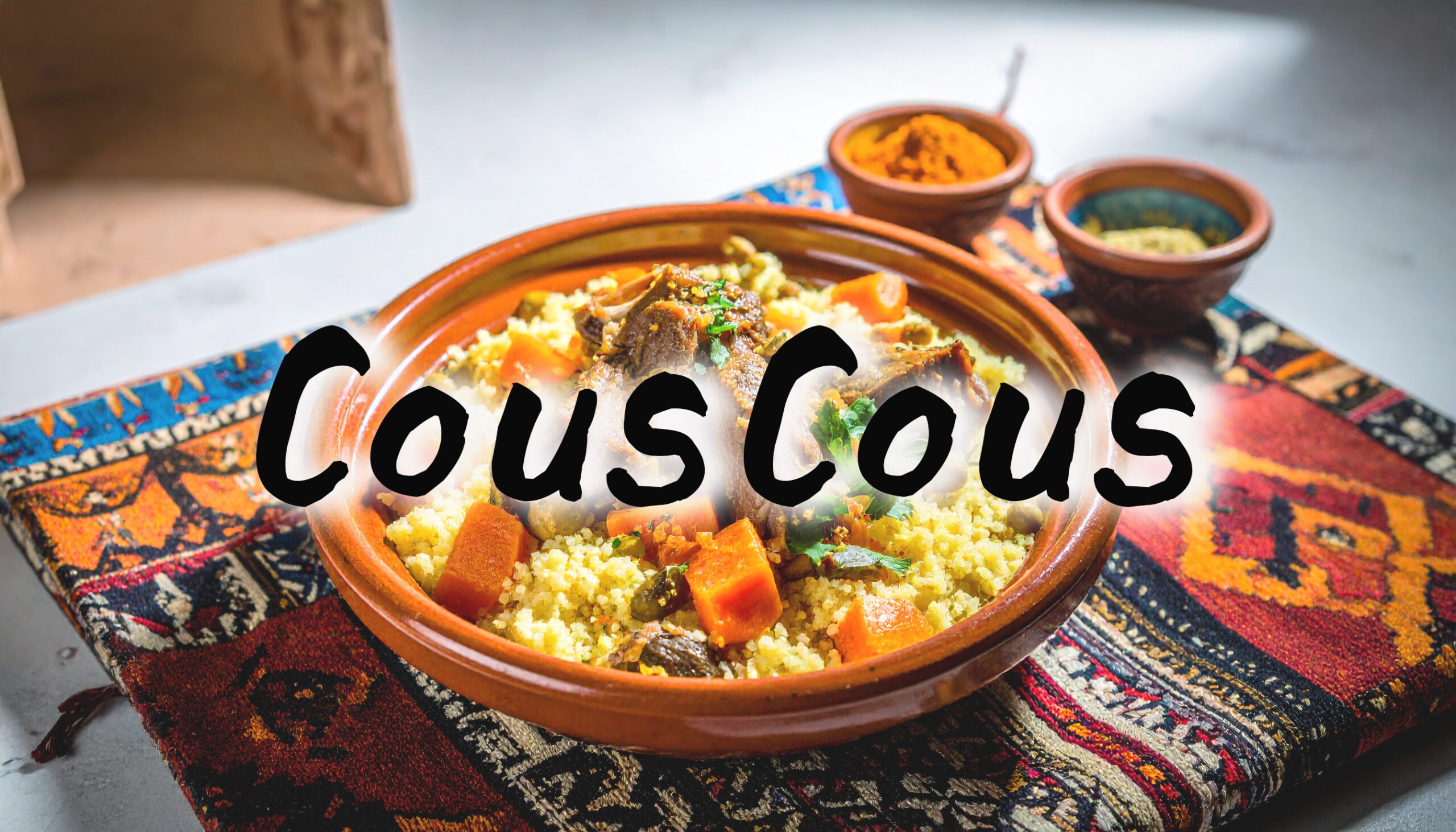The rich aroma of exotic spices and the simple, nostalgic flavor—that is Morocco's traditional dish, couscous. This dish, which has its roots in North Africa, has been passed down through generations in Moroccan homes and at celebrations.
Couscous is not just a staple food, but also a special food that connects people. Let's explore the appeal of couscous along with its history and culture.
What is couscous?

Couscous is one of the traditional staple foods typical of North Africa (especially Morocco, Algeria, and Tunisia). It is mainly found inCoarsely ground durum wheat flour (semolina) is mixed with water to form a granular mixture, steamed and cookedI will do so.
It is sometimes referred to as the “prototype of pasta” and is used as a staple food instead of rice or bread.
In Morocco,Along with vegetables, chickpeas, lamb and chicken in a stewed broth.It is commonly served, and the dish is richly flavored with spices (cumin, cinnamon, saffron, etc.).
TasteTune「Couscous」
Hey everyone, have you heard tastetune's song “Couscous”?
The core of tastetune lies in sharing music to help more people become familiar with cooking and to make them feel it's delicious.
Here, we introduce the thoughts, expressions, and ingenuity embodied in this music.
The Earth's Resonance and Traditional Tones
At the heart of this song lies the traditional sounds of Morocco.
The rhythm of hand-beaten drums evokes the texture of couscous's tiny grains and the lively gathering of people around it. The deep tones of the stringed oud instrument spread through the heart like the wind sweeping across the Moroccan desert, evoking a sense of nostalgia and warmth. These instruments express the history and culture embedded in couscous through sound.
Layers of spices and vegetables expressed through sound
The light resonance enveloping the entire piece evokes the essential spice aroma of couscous and the deep flavor of vegetables simmered over time. The fluffy sound expresses the rising steam-like fragrance, while the overlapping layers of sound represent the rich taste born from blending various ingredients. Listeners will feel warmth and flavor as if they were actually eating couscous.
Desert Winds and the Warmth of the Table
This piece not only paints the cooking with sound, but also reflects the landscapes of Morocco.
The light resonance evokes the dry wind sweeping across the desert, drawing the heart toward vast nature. The sounds of drums and oud conjure the warmth of a table shared with family and friends over couscous. This speaks to how deeply couscous is woven into people's lives.
Couscous for the ears
This song is more than just background music. It's crafted to let you savor the warmth of couscous, the aroma of spices, and the culture of Morocco through your ears. Close your eyes, and images of desert landscapes and bustling dining tables will come to mind. Please enjoy this “couscous” to your heart's content.
History of Couscous
The history of couscous dates back about 2,000 years,Berbers who lived in North Africa in the 2nd century B.C.The story begins in the lives of these people. as they prepare limited ingredients with ingenuity,The technique of steaming durum wheat into small grainscreates.
And this technique became the prototype for later couscous.
Eventually, in the Middle Ages, couscous spread widely with the spread of Islam and the development of trade. Especially in Morocco,Family meals and celebrations after Friday servicesIt has become a dish that graces special occasions such as Each family has its own unique seasonings and ingredients, and eachCommunity-based stylehas been passed down through the generations.
From the 19th century onward, along with French colonial policies, it also went to Europe, where it was incorporated into the local food culture by immigrants from North Africa. Currently,It is so popular across borders that it is readily available in supermarkets in France and Italy.The company was
And in 2020,Joint application by Morocco, Algeria, Tunisia, and MauritaniaThe "technology and culture of making couscous" that did,Registered as Intangible Cultural Heritage by UNESCOThe cultural value of the area was once again recognized around the world.
A short story about couscous
Couscous is an intangible cultural heritage
With its inscription on UNESCO's Intangible Cultural Heritage list, couscous is more than just a dish,It is recognized worldwide as a "culture that connects people to people."The wisdom of cooking passed down in the home and the scenery of the dining table are attracting attention as a valuable culture that should be preserved for the future.
Sweet couscous "Sehwa" is also popular.
Many people may think of couscous as a salty dish, but Morocco also offers a sweet couscous called "Seffa". This is a sweet dish of steamed couscous with powdered sugar, cinnamon, butter, raisins, and almonds,Weddings and other celebrationsIt often appears in
Symbol of Moroccan hospitality
Couscous is the quintessential dish for welcoming guests in Morocco.
Therefore, it's not just for special occasions—it's also essential for family gatherings and neighborhood get-togethers.
Everyone eats around a single platter.shows the spirit of sharing and helping each other.
Highly nutritious and remarkable in modern times
Couscous is low in fat, high in protein, and rich in fiber.Popular among health-conscious peopleis increasing.Carbohydrates but still light and comfortable to eatis attractive and is applied to salads, soups, and main dishes.
How to make couscous
In Morocco, couscous is carefully steamed using a special steamer (couscousier). However, in recent years,instant couscouscan be used to easily recreate this dish at home. Here, we will introduce a simple couscous recipe that is easy to make in a Japanese kitchen.
Ingredients (serves 2-3)
- Couscous (dried) ... 150g
- Boiling water...180 ml
- Olive oil... 1 tablespoon
- Salt... a pinch
Example:
- Chicken thigh meat... 150g (cut into bite-sized pieces)
- Onion... 1 (thinly sliced)
- Carrot... 1 (diagonally sliced)
- Zucchini... 1/2 (sliced)
- Chickpeas (boiled) ... 1/2 cup
- Canned tomatoes (chopped) ... 1/2 can
- Garlic... 1 clove (finely chopped)
- Cumin powder, cinnamon, turmeric... 1/2 teaspoon each
- Salt and pepper... to taste
- Olive oil... 1 tablespoon
How to make them
- Preparing the ingredients
Heat olive oil in a pot and sauté the garlic and onion.
Once the aroma rises, add the chicken and stir-fry until browned. - Soup making
Add carrots, zucchini, chickpeas, canned tomatoes, and spices.
Once everything is well combined, add about 400ml of water and simmer for about 15 minutes. Finally, season with salt and pepper to taste. - Steaming couscous
Transfer to another bowl, pour boiling water over it, and add salt and olive oil.
Cover with plastic wrap or a lidabout 5 minutes. Fluff with a forkand it's ready to serve. - Presentation
Spoon the couscous onto a plate, ladle the hearty soup over it, and enjoy. For added flavor, top with raisins or nuts if desired.
Summary
Couscous is a deep and heartwarming dish that reflects the lives and hearts of the Moroccan people.
The history, culture, and family bonds contained in each dish gently speak to those who eat it.
You can make it with ingredients you have at home, so please try it out for yourself.
I'm sure that feeling the breeze from a foreign land will make mealtimes a little more special.




Comment